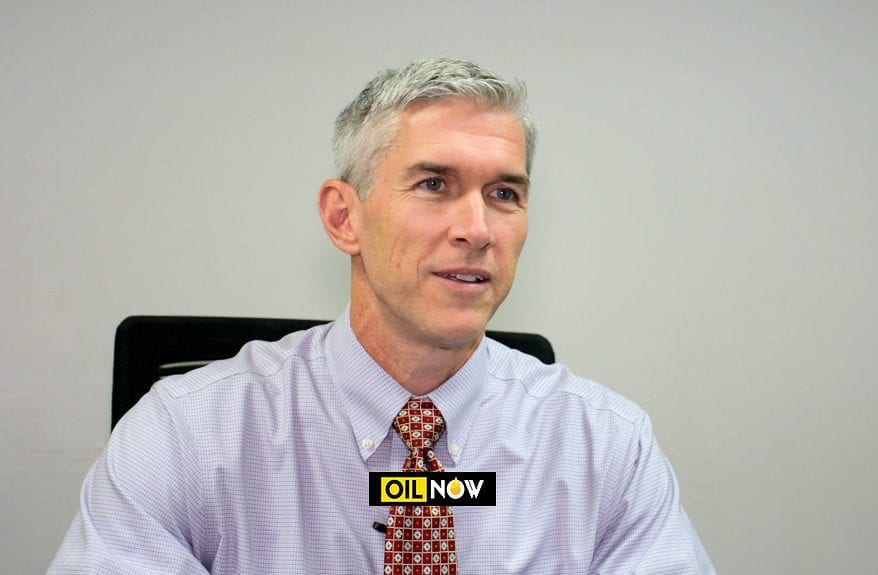ExxonMobil is forging ahead with its exploration and appraisal drilling programme offshore Guyana with new prospects in its crosshairs and plans to further assess proven oil fields. As the US oil major updated its total estimated recoverable reserves for its Stabroek Block on Monday, Country Manager of ExxonMobil Guyana, Rod Henson told OilNOW that seismic data points to other prospects which the company will be rapidly moving to explore.
“On seismic we see other potential prospects. Turbo and Longtail; they are about thirty miles to the south-east of Liza…there is more potential there and so we will be continuing to explore and drill more wells in that area,” he said, during an interview at his New Market Street, Georgetown office.
With one well already drilled at Turbo and one at Longtail, Henson said more data is needed for the company to fully evaluate that area. “That area we see could be as much as 500 million oil-equivalent barrels and so we’ll continue drilling there and with any luck, we’ll be able to increase the resources in that area as well.”
The company has also been assessing the Ranger oil field where it encountered approximately 230 feet (70 meters) of high-quality, oil-bearing carbonate reservoir back in January.
“Ranger was important to us because it did represent a different type of geologic play – carbonate versus sandstone. So it helped us to calibrate our understanding of some of the different areas on the block and it potentially opens up further prospects that might look like that,” he stated.
While Ranger is located in a carbonate play the other discoveries in the Stabroek Block have been in sandstone reservoirs.
Engineers have spent the last several months studying the data from Ranger, Henson said, adding, “Essentially we need to drill another well. We plan to do this sometime this year and then we’ll go from there.” He pointed out that not enough data is available yet to determine an estimate for the Ranger field.
Ranger-1 gives ExxonMobil new insight into Stabroek Block potential
More than 60% of the world’s oil and 40% of the world’s gas reserves are held in carbonate reservoirs. The Middle East, for example, is dominated by carbonate fields, with around 70% of oil and 90% of gas reserves held within these reservoirs.
ExxonMobil, Henson said, will continue to forge ahead with its exploration and production activities in the South American country with the first phase of oil production set to come on stream by March 2020.




This is encouraging news.Thank you.